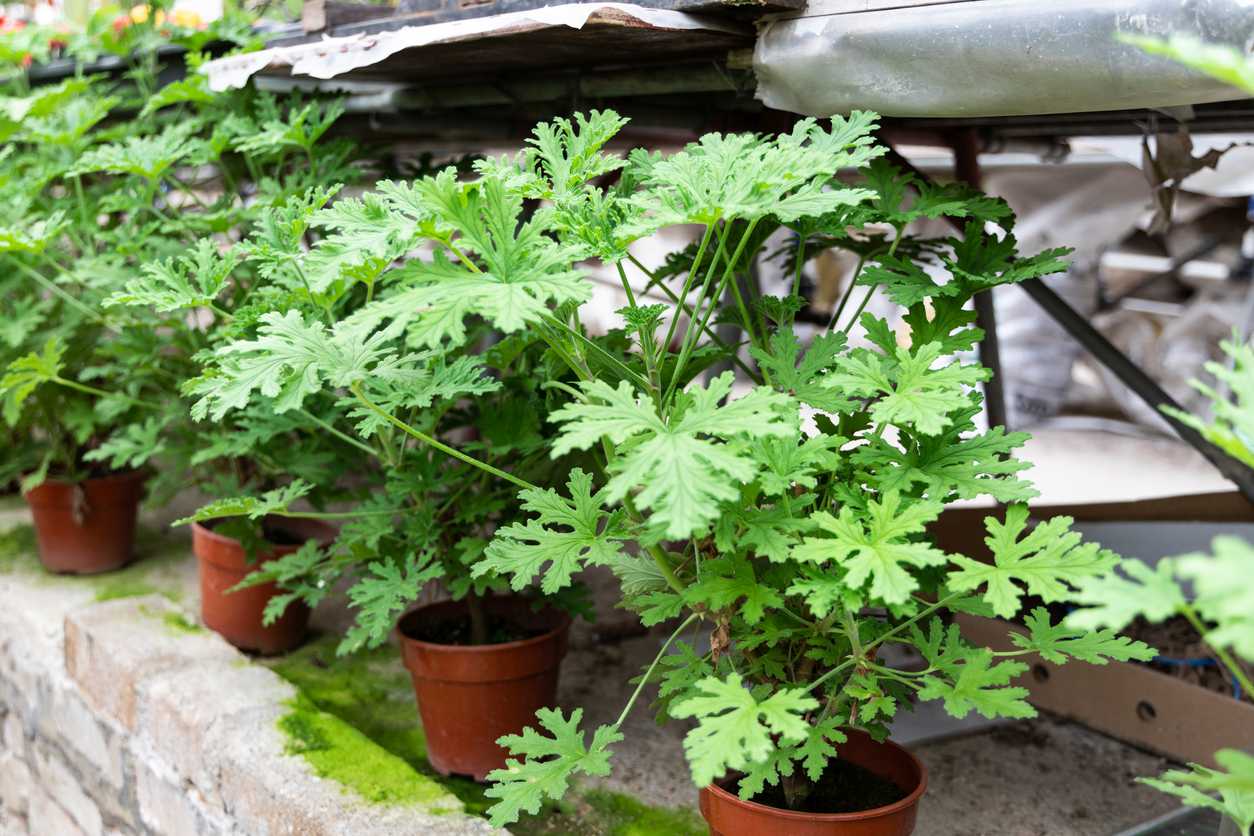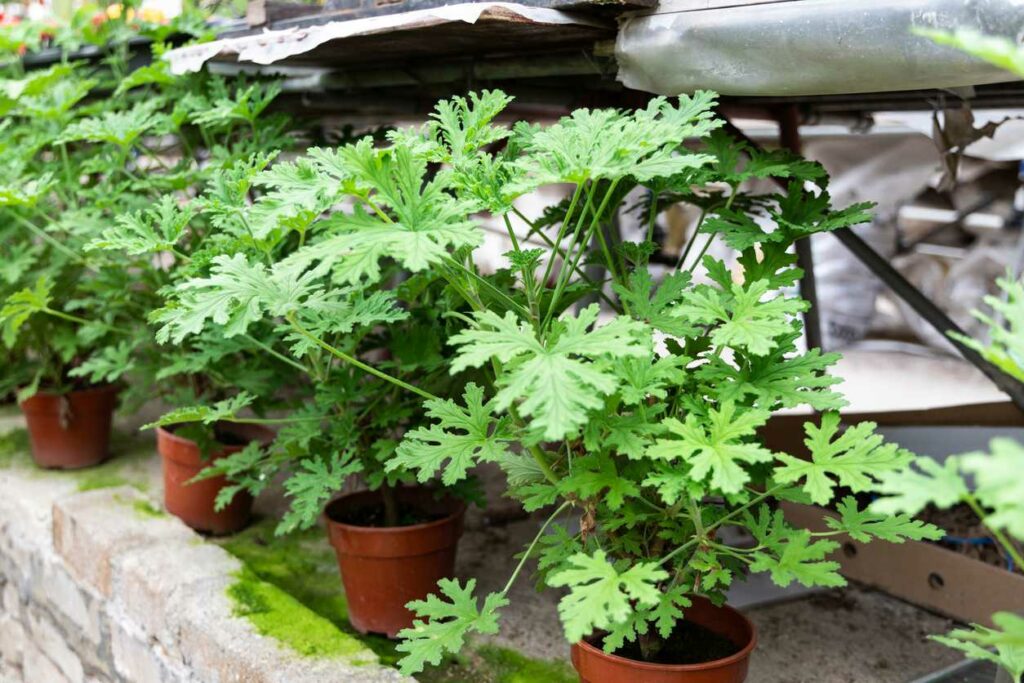Citronella Plant Care: How To Grow Mosquito Plants
The citronella plant is one of the most pleasant plants to grow in your garden. It has a citrus-like aroma and rich and colorful foliage. This same aroma is the reason the citronella plant has been known to repel mosquitoes. Although there’s no scientific basis for these claims, the citronella plant got the name the mosquito plant from this common misconception.
Whether you plant it to repel mosquitoes or simply because it looks and smells great, there’s no denying the merits of having the citronella plant in your garden. So what is the mosquito plant? How do you grow it? And how easy or hard it is to care for it? Read on to find the answers to these questions.
Citronella Plant at a Glance
The citronella plant (Pelargonium Citronella) has leaves that look very much like parsley. In the summer months, this evergreen perennial grows lavender flowers which spread that citrus fragrance that gave it its name. The flowers look like geraniums and their scent grows strong in the summer evenings.
Gardners like the mosquito plant because it can fit within many landscaping designs and schemes. You can use it in borders and floral hedges, or grow it in containers on your patio or balcony. Thanks to their aromatic qualities, they’re planted along borders and paths in the garden to spread their fragrance.
Despite their pleasant scent, you should be careful around the mosquito plants especially if you have pets. These plants are toxic and can cause health issues to both cats and dogs. If your cat or dog comes in contact with the leaves of the citronella plant, they might get dermatitis. Eating the leaves in small quantities can give them an upset stomach while ingesting large quantities would kill small animals. So always keep it out of reach of animals and children.
How to Grow Mosquito Plants
When it comes to growing mosquito plants, this is a two-step process. First, you need to start with the seeds and after they germinate and give you seedlings, you’ll need to plant them in their permanent place either in a container or in the garden.
Grow Mosquito Plants from Seeds
The main reason you’d want to grow your mosquito plants from seeds is to ensure the quality of the plant and maybe also save a few bucks. However, this step takes a lot of time and work.
- To give yourself a head start, sow the seeds indoors before you move them out.
- Start about 6 weeks before the last frost.
- Fill a pot or a shallow container with soil and compost then water it to make it damp.
- Sprinkle the seeds on the wet soil. That way the seeds will stick to the soil and not fly away. Cover the seeds with a thin layer of soil.
- Cover the container or pot with a plastic cover to protect against the chilly wind. Warm soil is necessary for germination.
- After a couple of weeks or a little more depending on the weather, the seeds germinate.
- Once the seedlings grow a couple of inches, thin them out to keep the healthy ones.
Planting Mosquito Plant Seedlings
While the citronella plant has USDA hardiness zones between 9 and 11, they need special care and attention to grow successfully in cool climates. If you worry about the weather conditions in your area, then you should stick to growing the mosquito plants in containers. Keep in mind that you’ll need to harden the seedlings you grew in the first step before you move them to their permanent place in the garden.
The spot you choose for your citronella plants should get at least 6 hours of sunlight every day. The south and west parts of your garden are ideal spots to grow this hardy perennial. The same rule applies to indoor plants. They should be near a window that gets plenty of sunlight every day. Make sure the soil is well-drained.
Dig a hole in the soil that’s twice the size of the pot where the seedlings grew. Place the seedling with a clump of soil around its rootball into the hole and fill it with soil. Make sure the top roots are level with the soil. Also, space the citronella plants about 16 inches apart to allow them to grow without competing over space of nutritions.
Citronella Plant Care
Admittedly, growing mosquito plants from seeds is not the easiest or most straightforward process. However, once you have them growing happily in your container or out in the garden, then caring for them gets easier.
Water
One of the most crucial aspects of plant care, especially evergreen perennials, is watering. The thing is, there’s no clear cut set of rules that tell you how much you need to water your citronella plants. Many factors play a role in irrigation frequency. From the weather conditions to the soil type and the time of year. One thing to keep in mind though is that overwatering is the number one enemy of mosquito plants. Drainage holes in the containers are your safety valve against waterlogging. Also, let the top few inches of the soil to go dry before you water the plant.
Fertilizers
As with most flowering plants, your citronella plants need a dose of plant food supplements both during the growing and flowering cycles. A well-balanced fertilizer will give your plant all the nutrition it needs to grow robust foliage, fight off diseases, and produce fragrant blooms in the summer. For best results, fertilize the plant in the early spring and once again the middle of summer. The recommended dose is one tablespoon of fertilizer for every square foot of soil. Avoid adding the fertilizer near the stem of the plant to prevent burning it.
Pruning
Pruning the mosquito plants will become a regular chore once these hardy perennials reach maturity. While on average the fully grown citronella plant can reach between 2 to 4 feet, if you don’t take the pruning shears to it, this growth can become unmanageable. Many horticulturalists like to snip or pinch new growths to encourage the plant to become bushy.
Another thing to look out for is the tendency of the plant to become leggy. This is usually caused by poor or not enough sunlight. Trim away the leggy branches and make sure your plant gets 6 hours of sun every day. Also, pay attention to wilting leaves and branches. Removing those triggers the plant to grow healthier branches to replace the dead ones.
Winter Care
Many evergreen perennials need special care in the cold winter months. And the citronella plant is no different in this respect. When the weather changes and the temperature drops, it’s time for you to move your mosquito plant container inside. They should stay there sheltered from the elements until the last frost has passed.
For plants in beds that cannot be moved, make sure to cut them back in late September or October depending on when you expect your first frost. Then cover the beds with mulch to keep the soil warm. If you fear your citronella plants won’t survive the winter, you can dig them out and plant them in containers. Make sure to take out the plant with the clump of soil that protects the roots. Plant them immediately in the containers and water the soil.
Pests and Diseases
The most commons problems you will have with the citronella plants are leaf spots. It’s an issue related to overwatering. If you notice dark spots in the foliage, hold off the water until the soil goes dry. In many cases, leaf spots are accompanied by root rot. If the problem doesn’t go away after you let the soil dry, you might have to repot the plant after trimming the damaged roots.
As for pests, the mosquito plant, ironically, attracts common bugs such as mealybugs, caterpillars, and whiteflies. For large infestations, you can use neem oil to eliminate these pesky bugs. If it’s just a few bugs, you can pick them one by one with your hand and get rid of them in a bucket of water.
Tips for Growing Citronella Plants
Even though some aspects of growing and caring for citronella plants seem daunting at times, don’t let that intimidate you. Here are a few tips that help you get the most out of your mosquito plants and avoid the most common problems gardeners have with them.
- For a healthy and bushy plant, make sure it gets at least 6 hours of full sun on a daily basis.
- Hold off the water until the top couple of inches of the soil is dry. The mosquito plant can handle dry soil better than a constantly moist one.
- Well-drained soil with a pH between 6 and 7 is ideal for the success of this plant.
- Make sure the container or pot has enough drainage holes in them to prevent waterlogging.
- The ideal temperature for the growth and success of citronella plants is between 60 and 70 degrees Fahrenheit.
- Citronella plants grow well along with other companion plants such as thyme, mint, coleus, and nasturtium.

